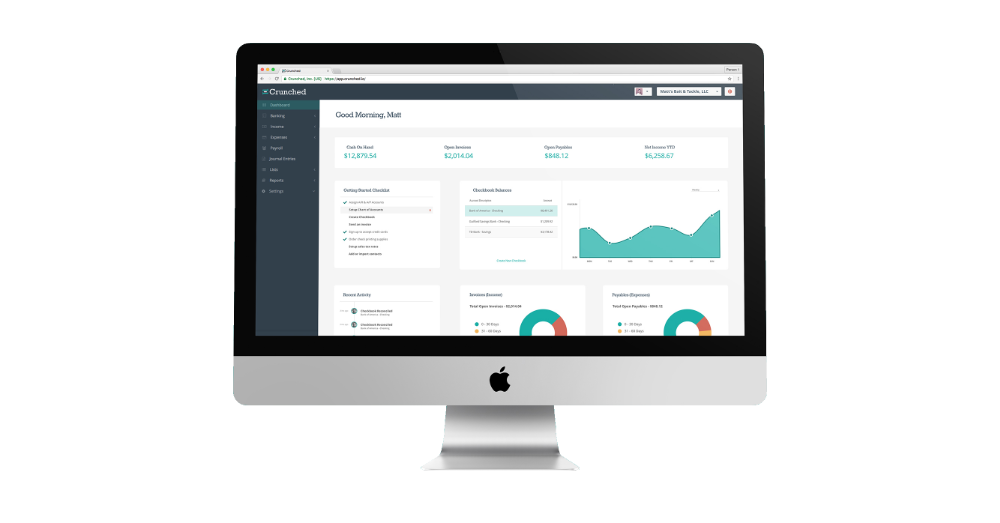Small Business Year-End Tax & Accounting Preparation
By Matt Reims
It’s the end of the year and now is the time when small businesses should begin closing out their books. When it comes time to establish your tax liability and file your taxes, it’s always a good idea to consult with an accountant. As you plan for that, here are a few essential steps that you can take to shore up your accounting and ensure that your books are ready for tax filing.
1. Gather Your Financial Statements
Your accountant will need your income statement to file your taxes but will also want to look at your balance sheet and cash flow statement. These basic financial statements can be pulled up easily if you’re using cloud accounting software. For more detailed information about financial statements, check out the article Understanding The 4 Basic Accounting Reports.
Here’s a quick look at the three you’ll need for tax filing:
Income Statement
The income statement shows the profitability of a small business in a given period of time. In the case of year-end tax preparation, you’ll want the income statement to report for the year. The report will show revenues, expenses, and certain gains and losses.
Balance Sheet
Your company’s balance sheet is a snapshot of your assets and liabilities. The difference between the two lets you know how much equity you have in your small business.
Cash Flow Statement
A cash flow statement shares some similarities with income statements. This is an accounting report that shows how much money goes in and out of your business during a specific period of time.
2. Consider Deferring Income
Any income received prior to December 31 will count as income for the current year. You can, however, move end-of-year income to January to help reduce the tax burden for the current calendar year. If you already have large tax obligations for the year and anticipate significant year-end payments coming in, it may make sense to defer some of it. Consult with your accountant to get their opinion.
3. Consider Deductions
In preparation for filing year-end taxes, you’ll want to start gathering a list of the items that you’ve purchased that can be deducted. These include office equipment such as printers and computers, and supplies like paper, staplers, etc. Other significant deductions may include rent, vehicle use, utilities, contract labor, and more. Check with your accountant to verify a full list of deductions for your type of business.
Take stock of your current equipment and supplies. If you’re planning on upgrading your computer system, purchasing new software, and/or making a large supply run in the next couple of months, it may make sense to make those purchases now. You’ll be able to apply the deductions to the current year. Charitable contributions are also deductible. If you haven’t done so yet, the end of the year is a good time to give to your favorite charity.
4. Fill Out IRS Forms
Each year, small business owners are required to report annual earnings for full-time employees and independent contractors. You need to mail out W2s to full-time employees and 1099s to independent contractors by their due date. Be sure to check with the IRS, as due dates have changed in recent years.
5. Reconcile Your Accounts
Ideally, you should be reconciling your accounts on a weekly, or at least monthly, basis. If you’re behind on reconciliation, take the time to do this. You need to make sure that your bank accounts match up to the figures that you have in your cloud accounting software or spreadsheets.
6. Ensure You Have W-9s in Place
If you hire contract employees and pay them over $600 throughout the year, you’re required to receive a completed W-9 form from them. You’ll need the W-9 forms to obtain the information needed to fill out 1099 forms. You then need to send the contract employees 1099s so they can use them to report the income.
7. Get on Your Accountant’s Schedule
Accountants get busy at the end of the year. Waiting to the last minute to schedule tax preparation meetings could result in filing past your ideal timeframe or having to set up less-than-ideal meeting times. You’ll also want to make sure that you have all of your information and reports in hand and ready to go for your accountant.
8. Prepare Vehicle Log and Travel Expenses
If you travel for work, there are a range of expenses that you can deduct. Of course, you should consult with your accountant to verify the deductions you plan to make.
If you travel by car for business, you should be able to deduct your gas and mileage expenses. The IRS has standard deductible mileage rates. The standard rate is an established figure that can be applied to each mile you drive for business. It covers gas and mileage. The rates can be found here https://www.irs.gov/tax-professionals/standard-mileage-rates. There are a variety of mileage apps, like MileIQ, available that help you track your auto travel.
If you travel long distances, you’ll be able to deduct a wide range of travel expenses. Some include airfare, train tickets, meals, hotels, etc. Click here for more information about business travel deductions.
Being prepared for year-end tax filing will make the process run much smoother, and your accountant will thank you for it. Having all of your accounting reports and data properly collected will also help reduce potential errors and increase the chances that you’re able to take the most possible deductions. To make the process easier, make sure to take advantage of the available technology, such as cloud accounting software, and mileage apps. These tools will make the process much easier and faster.


